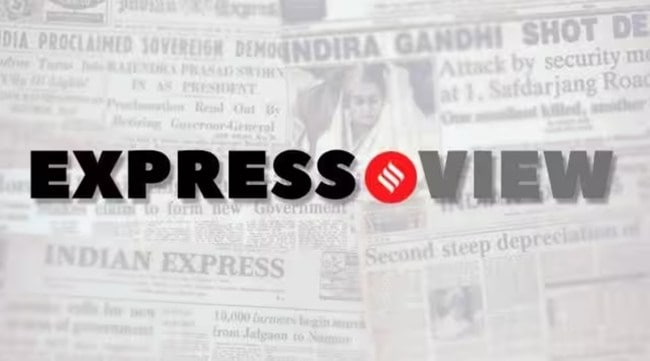Opinion IFFI Bollywood controversy: A wake-up call for the festival
Express View: This points to a larger problem. As it enters its third decade in Goa, IFFI must step up to its founding vision
 As the 20th edition of IFFI in Goa draws to a close, the controversy generated by a jury member’s remark on the predominance of the Hindi film industry at the festival has drawn attention to why this ambition remains unfulfilled. Documentary filmmaker
As the 20th edition of IFFI in Goa draws to a close, the controversy generated by a jury member’s remark on the predominance of the Hindi film industry at the festival has drawn attention to why this ambition remains unfulfilled. Documentary filmmaker In 2004, when the International Film Festival of India (IFFI) was given a permanent home in Goa, the vision was clear. India is home to some of the oldest and most prolific film industries, with world-class talent and a large domestic market. With scenic Goa as the backdrop, IFFI was projected to take its place alongside the prestigious Big Three of film festivals — Venice, Cannes and Berlin.
As the 20th edition of IFFI in Goa draws to a close, the controversy generated by a jury member’s remark on the predominance of the Hindi film industry at the festival has drawn attention to why this ambition remains unfulfilled. Documentary filmmaker
Arvind Sinha, chairperson of the non-feature film section of Indian Panorama, told reporters last week that IFFI should be a platform for “documentary filmmakers, feature filmmakers who need support” and that “public taxpayers’ money should not be spent on filmmakers like Karan Johar”. Sinha’s words have drawn flak but the problem he highlights is a larger one, and it cannot be dismissed.
Of course, that IFFI has not lived up to its potential cannot be pinned on Bollywood. Neither can the Hindi film industry be excluded from India’s marquee festival. The glamour that Bollywood brings is an important ingredient in the festival’s success. Cannes, for example, has carefully cultivated its star-sprinkled red carpet over the years, designed to ensure that the world’s eyeballs are fixed on it.
The French festival also no longer disdains outright commercial fare: If one of the notable premieres at Cannes this year was Fallen Leaves, the latest by Finnish arthouse great Aki Kaurismaki, one of the noisiest launches was Tom Cruise’s Top Gun: Maverick. A similar logic goes into, for instance, IFFI’s decision to invite Johar to announce his next project at the festival.
Yet, IFFI needs to do more to live up to the ambition spelled out on its website — “to provide a single platform for ambitious filmmakers, cineastes and industry professionals”. Bollywood can have a foothold in IFFI, but should it occupy most of the space, at the cost of others? If the Golden and Silver Peacock are to have the same cache as the Golden Bear, the Palme D’Or or the Golden Lion, the competition sections must be sacrosanct, allowing entry only to the best.
In this year’s edition, no single entry stood out. IFFI must ensure that only the very best of Indian cinema finds a showcase, with particular attention to films that don’t find an audience easily. As it enters its third decade in Goa, IFFI must step up more to its own vision.






